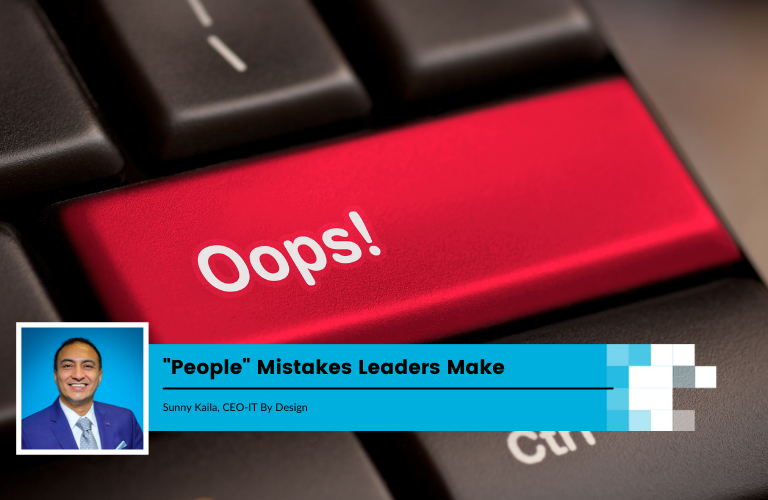In the post-COVID IT economy, your resume alone isn’t enough to get hiring managers to add your profile to their priority list. Sure, you may tick all the right boxes in terms of skills, you may have a compelling track record to talk about, and you may have a winning personality, too. But chances are, so will several other applicants.
Today’s hiring climate demands not only patience and persistence, but a fundamental shift in job searching strategies. Key among them is ensuring that you don’t just make a good impression, you make a lasting impression – sticking in peoples’ memories.
To learn about different strategies that applicants can use for standing out from the competition, I had a quick chat with my colleague Todd Billiar. Currently working with IT By Design as director of channel partnerships, Todd has more than 25 years of experience in the field of technology consulting and service—as a technical specialist, a manager, and a vendor.
Create your professional brand with the right marketing materials
Do you have professional marketing materials other than your resume to show off your achievements and experience? An online portfolio or website that highlights your accomplishments and experience is a smart way to stand out from other applicants. While you’re working on your professional brand, remember to highlight your soft skills alongside your achievements.
Create a “Master Resume” that lists every possible skill, responsibility, and achievement for each of your previous roles. List your set of achievements separately underneath each of your roles and responsibilities, such as projects you’ve worked on, their size and scale. Include any key awards, project results, or CSAT statistics that will set you apart from your competition at a glance. Every time you apply for a new job, customize your resume so it emphasizes the experiences and skills the employer is seeking in an applicant.
See each interview as an opportunity to sell your skills
Nowadays, most interviews are being conducted via video conference, but this doesn’t mean that you shouldn’t treat video interviews like any other face to face meeting. Dress as you normally would for an interview, be mindful of what’s in the background, check the lighting, and sit at a table rather than on a sofa. Make sure you have the correct posture as you use a laptop rather than a phone to get that ‘professional’ video angle.
Explain your skills during the interview rather than just saying you have them and pinpoint how you used them in your past roles. This could include implementing a new ticketing system or improving the team’s CSAT score. Ultimately, you want it to be crystal clear how you fit into the puzzle of their needs, that you understand what their pain points are and you have the skills and experience to overcome them.
Answer questions directly and thoroughly as well as giving anecdotes about your career history, past actions, and results. Remember, applicants who demonstrate a history of using leadership skills in prior positions are more likely to stand out from the rest. Even if you’ve never had a management role, you’ve probably got leadership experiences tucked away, such as running a team project. So, give hiring managers the opportunity to connect to you, your story, and your mission.
Show off your hunger to learn
Throughout the process of pre-screening and interview, demonstrate a growth mindset. And, you can only do that by proactively showing that “you’re a sponge.” In your cover letter, resumes, and interviews, display your commitment to absorbing new information quickly, your desire to learn and grow in your role. Always be able to cite examples of how you have done this in the past.
In the most impressive interview I’ve ever led, within the first few minutes I was thinking, “I need to hire this person right away.” This happened because the person I was speaking to was open to new challenges and learn. A soft skill that can help you stand out from the crowd is ‘learning agility’ – a willingness and enthusiasm to move with the times, take on new skills and expand into new IT domains as business priorities evolve. As suggested by Todd, this hunger to learn always leads to developing new skills and being a good team player.
Use social media to strengthen your professional brand
Your LinkedIn profile is often where you make a first impression with a recruiter, so always use a professional photo for your profile image. Make sure you have no bad language, defamatory or racist statements, text complaining about the last job, and political statements on your LinkedIn profile. Use LinkedIn’s messaging features to strike up connections with relevant contacts, for meaningful networking.
Join industry peer groups and share industry-specific content across your social media profiles to back up your digital resume. Comment on other thought leaders’ content and keep abreast of key IT trends that could become a talking point come interview time.
Final Thought: There is no cheat sheet or creative gimmick to landing your dream job in today’s IT hiring landscape. Whether it’s on paper or in the interview, you need to come out of the gates showing a potential employer what you bring to the role and most importantly – what differentiates you from the rest.



